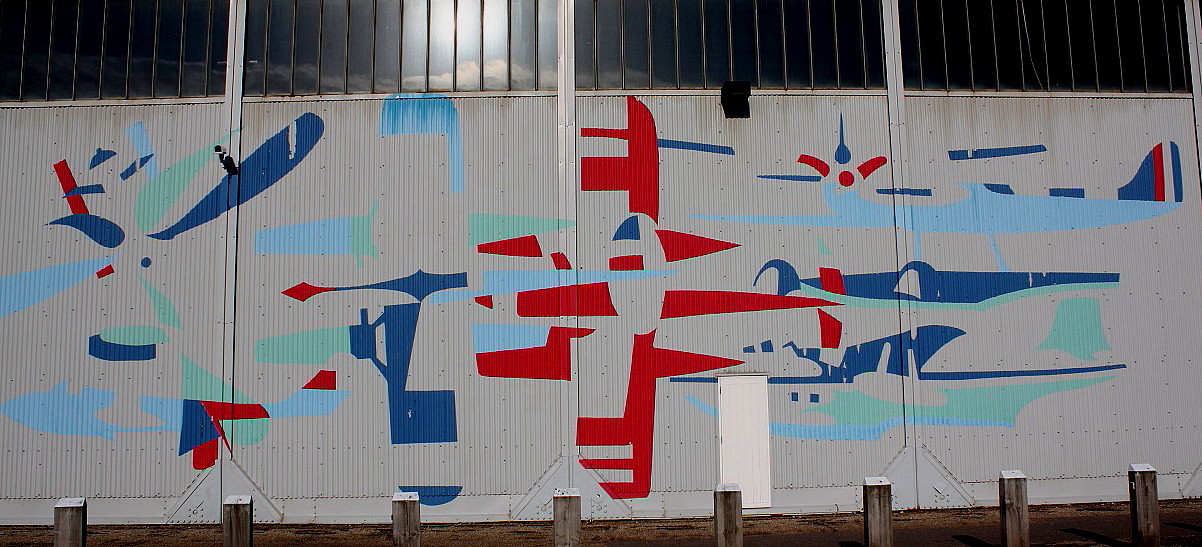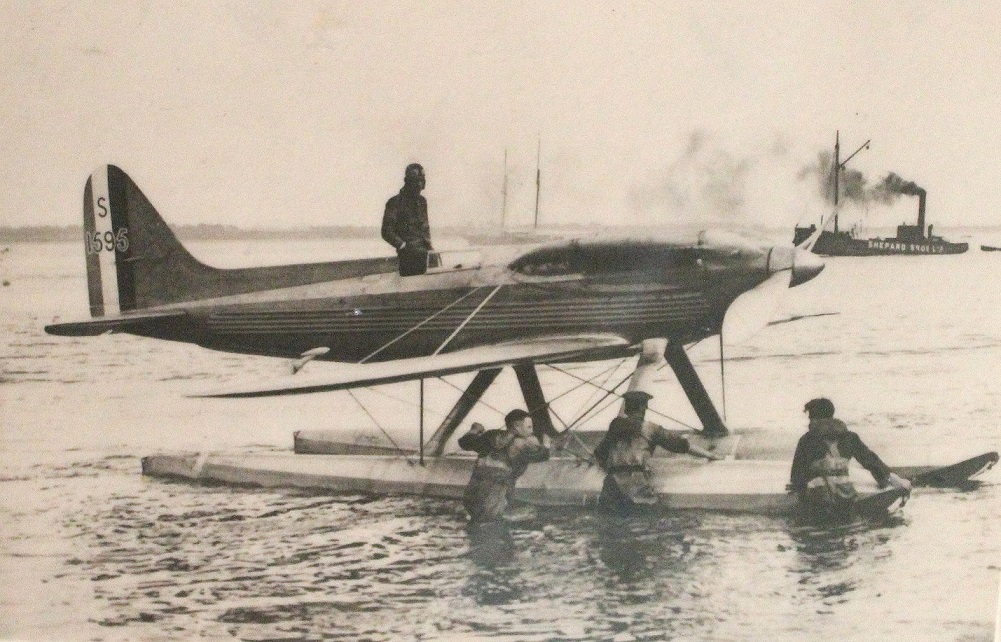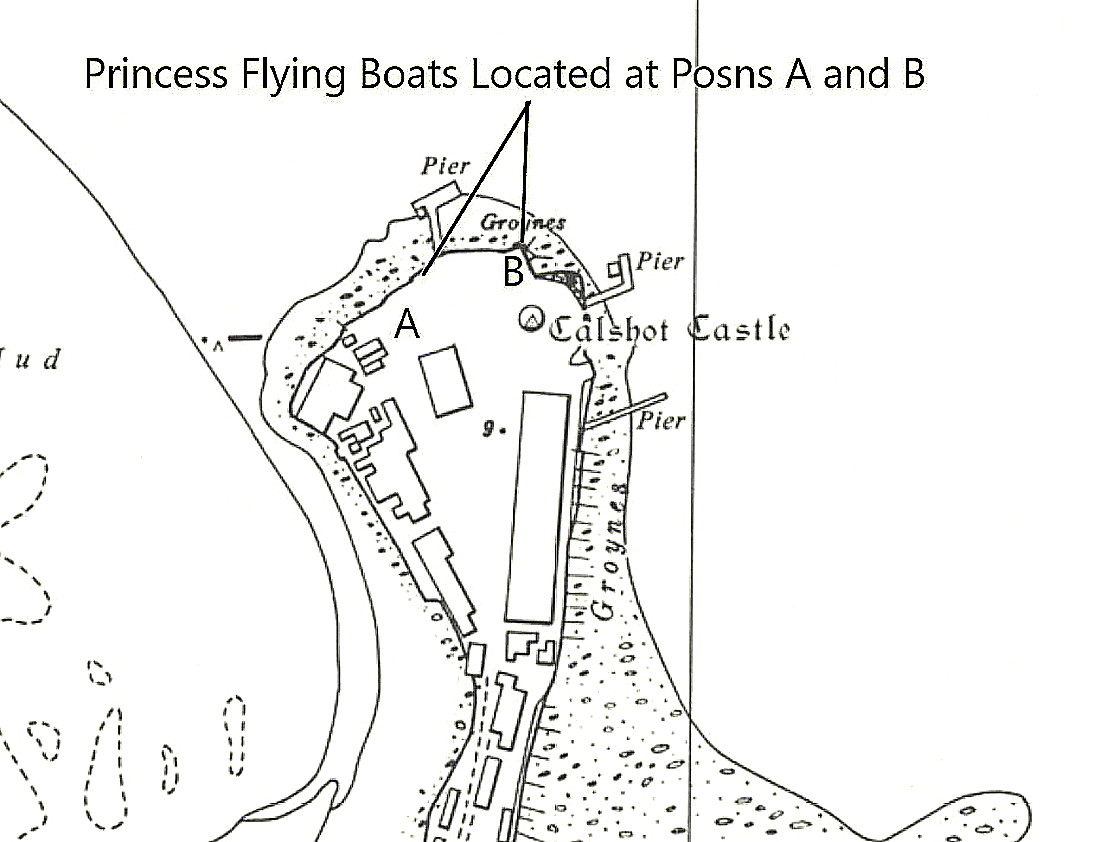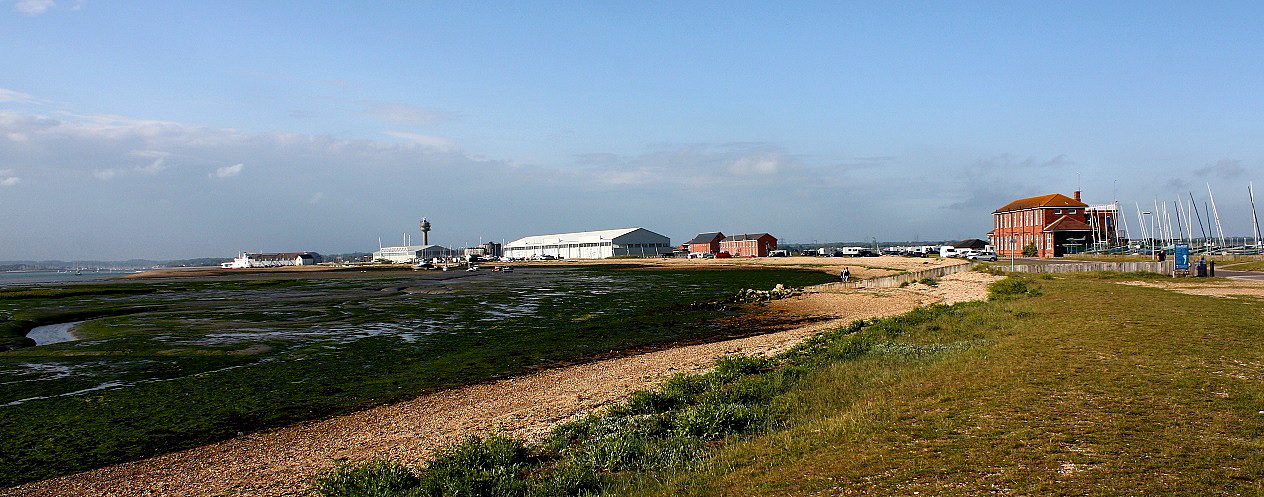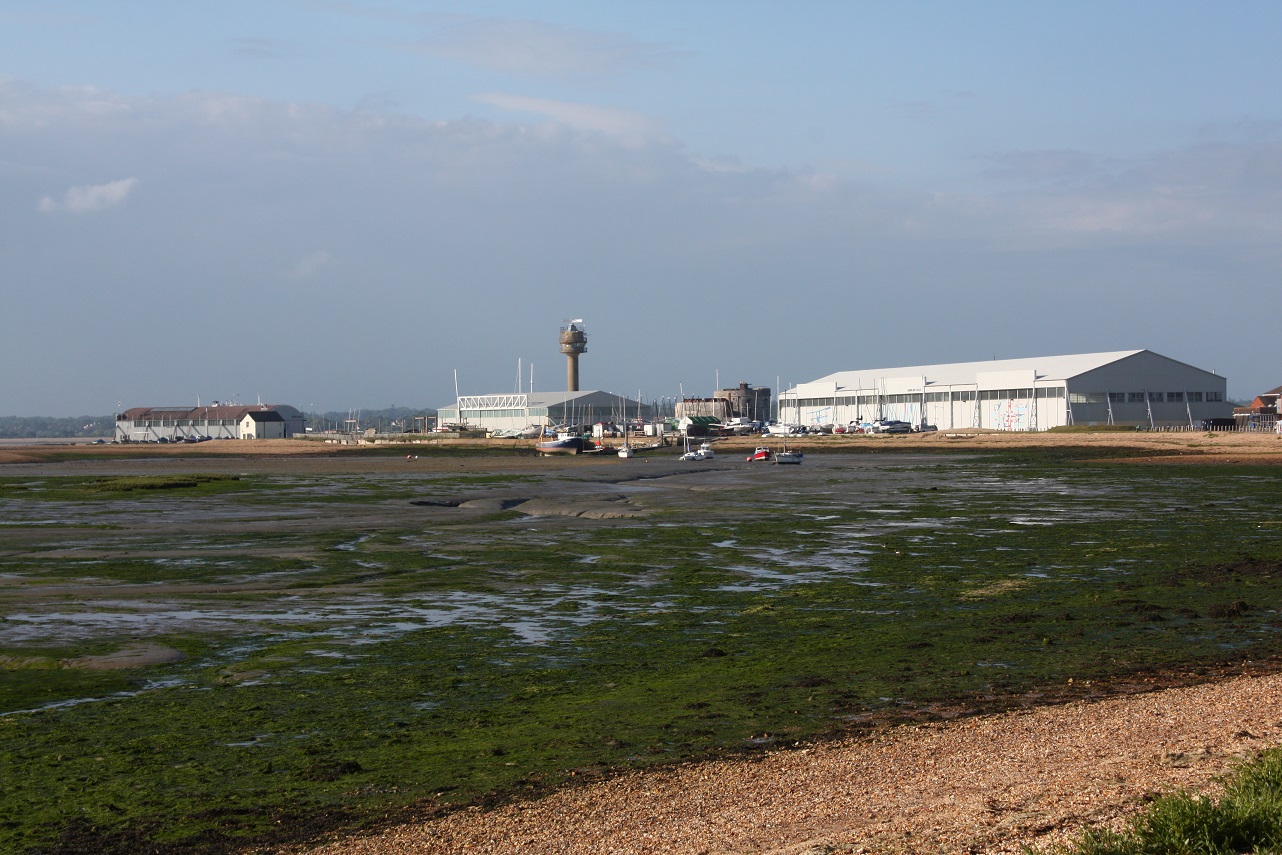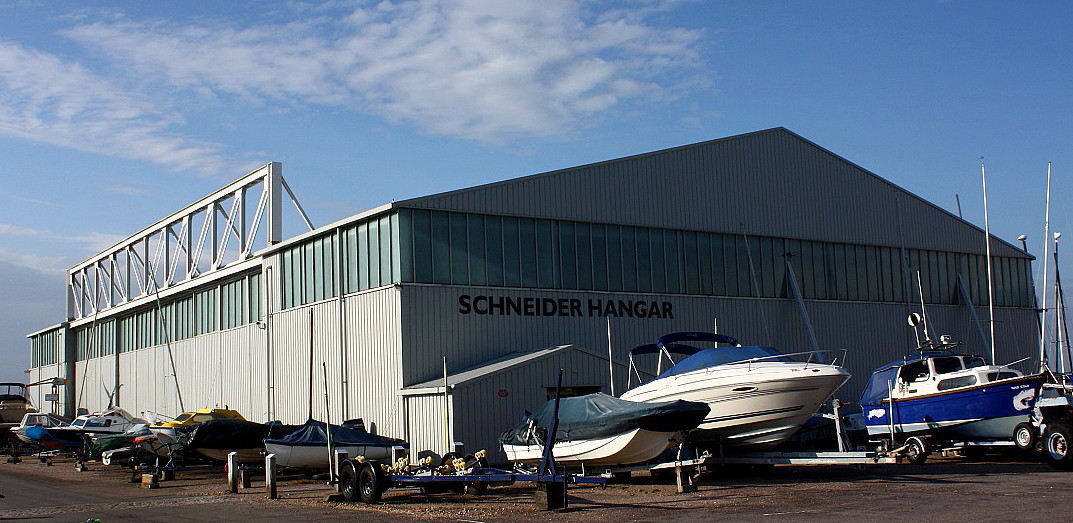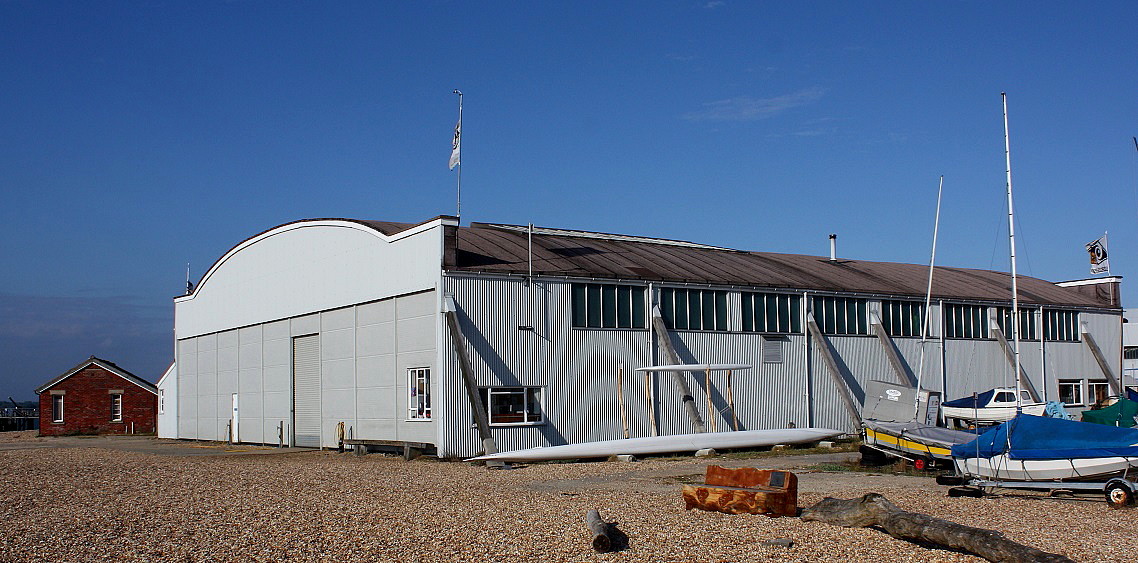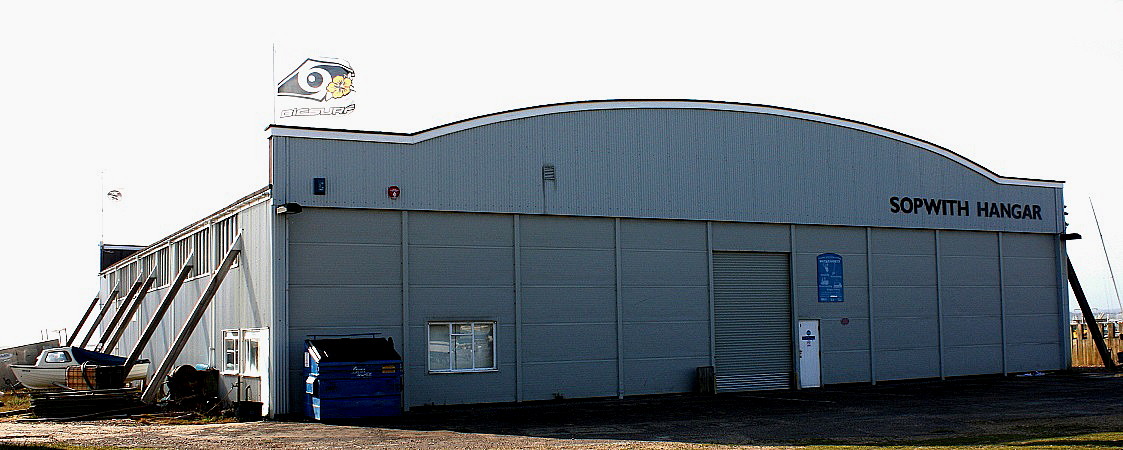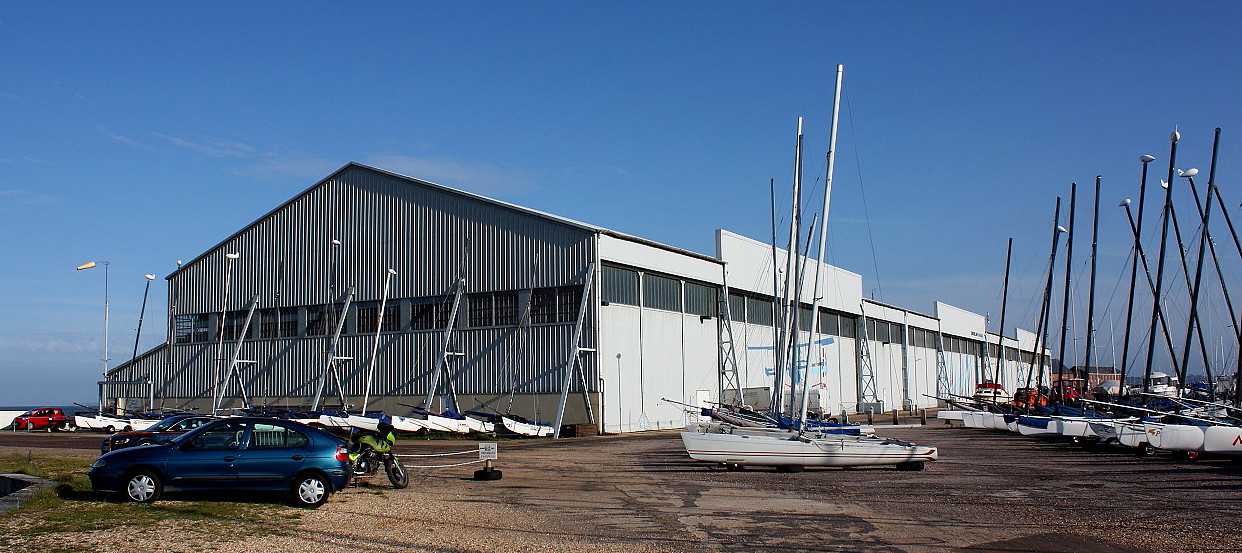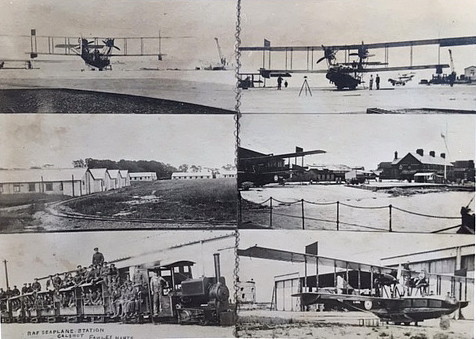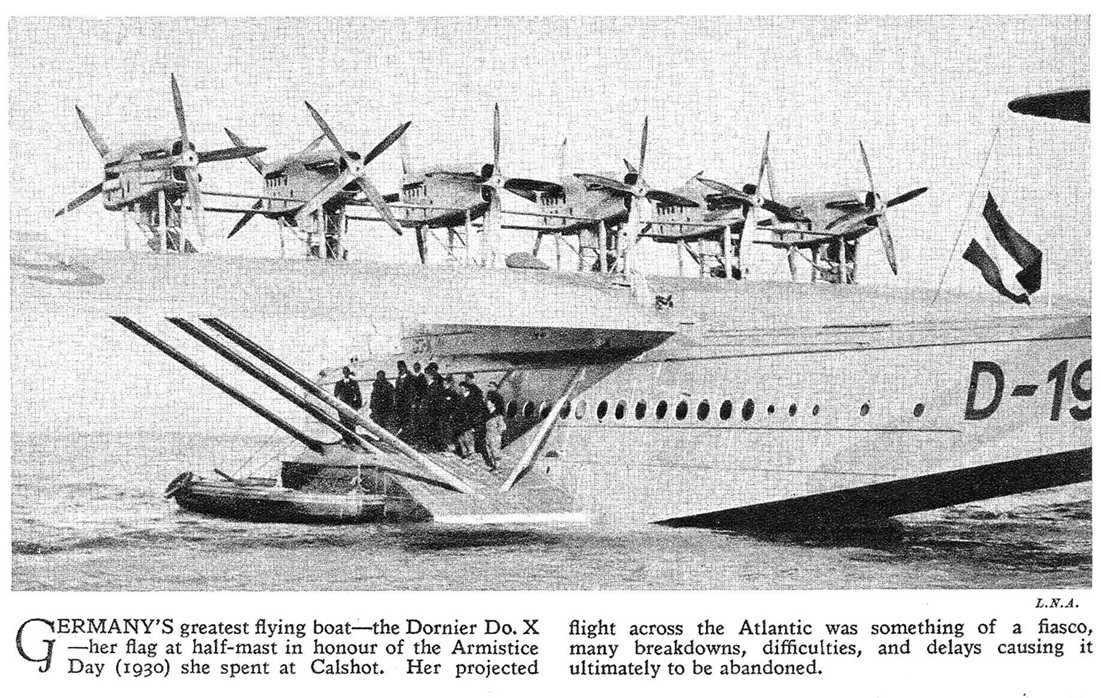Calshot
CALSHOT: Early experimental flying site
NOTES: According to Mike Roussel in his book Spitfire's Forgotten Designer: “Edwin Rowland Moon, who owned the family boatbuilding business of Moonbeam Engineering, based at the Wool House, Southampton, decided to build his own homemade aircraft named Moonbeam I and Moonbeam II. Moonbeam I was first tested near Calshot, but the 'flights' consisted mainly of short hops.”
He then took Moonbeam II to North Stoneham Farm in 1910, a site which later became EASTLEIGH and is now SOUTHAMPTON INTERNATIONAL AIRPORT.
CALSHOT: Military and later civil water aerodrome
Note: All pictures by the author unless specified. At this time the Short Sandringham (G-A???) and the DHC.1 Beaver on floats were based/stored here. I think the Beaver was G-DHCB which ended up, the last time I saw it, on LOCH EARN in Scotland.
Military users: 29th March 1913. RFC Calshot Naval Air Station
RFC/RNAS/RAF Seaplane Station (1913 to 1918)
RNAS/RAF Seaplane Training Station (1914 to 1918)
RNAS/RAF Flying Boat Base (1917 to 1918)
RAF Training Depot Station (1918 to 1919)
RAF Marine Operations Station (1918 to 1945? Possibly longer?)
1919 to 1939: RAF High-speed Flight in the late 1920s and early 1930s. Base for the Schneider Trophy Races.
RAF flying boat and seaplane base.
480 Coastal Reconnaissance Flight (Supermarine Southamptons)
WW2: RAF Coastal Command
Seaplane Training Flight (Supermarine Scapas & Short Singapores)
Civil users: Post 1945: Antilles Air Boats
It appears that in 1977 Antilles Air Boats were offering flights in the summer season, from CALSHOT in VP-LVE. The previous year they operated from Studland Bay on the Isle of Purbeck just SSE of Poole in Dorset.
Location: 2nm SE of Fawley, at end of curving peninsular where Southamption Water joins the Solent
Period of operation: Military: 1913, intensive use during WW1 and through to WW2. Probably operational to 1961 but mostly not for flying duties? (Intermittent civil use since 1961)
Alighting area: Mainly? 3nm N/S, 1nm E/W
NOTES: The first mention regarding Pilot Certificate records at CALSHOT occurs on 15/5/15 when Flight Commander Hyde-Thomson was awarded Pilot Certificate No.1245 flying a Wight Seaplane from here. He also listed flying a Bristol Biplane from CHINGFORD. It does seem pretty certain though that this site was in use from 1913.
EARLY HISTORY
In his book Spitfire's Forgotten Designer (That's Joe Smith not R.J.Mitchell) Mike Roussell informs us that: "The Sopwith hangar was the first to be built, in 1913, for aircraft repair and maintenance, followed later by the Schneider hangar. The first seaplane used was the Sopwith Bat, and during the First World War the air station was actively defending the English Channel and the Solent from the threat of submarine attack. Further buildings were added in 1917 for offices and workshops, including a third hangar, the Sunderland hangar." Obviously these hangar 'names' were added later on.
"The RFC and RNAS combined in 1918 to form the RAF. Three flights were based at Calshot and by 1920 the station had become RAF Calshot, mainly training aircrews for flying boats and also for coastal reconnaissance. Part of RAF Calshot was also used for the training of motorboat crews for the rescue of airmen who crashed in the sea." Or who had presumably force landed, probably due to engine failure etc. "In addition, the motorboats were used to tow targets for ships and aircraft to shoot at, also acting as tenders for the flying boats." Regarding target practise, I wonder how long the tow lines were?
"At first, prior to the end of the First World War, the Felixstowe flying boats had been stationed at Calshot, but in 1925 the Southampton flying boats replaced the Felixstow F5s. On 9 January 1928, the first of two twin-engine amphibian aircraft, the Supermarine Seamew N212, took off on its maiden flight. The Seamew had a retractable undercarriage and a crew of three." Reading this made me wonder if it was actually an amphibious aircraft that first employed a retractable undercarriage, in the UK at least? The first British military (production) land-plane I can think of was the Avro Anson which first flew in March 1935.
PIONEERING FLIGHTS.
In March 1924, perhaps inspired on hearing about the the U S Army Air Service ‘Round-the-World’ flight using four Douglas World Cruisers was about to take place(?), a lone Vickers Vulture amphibian set out from here on a round the world flight. The leader and navigator was Sqdn. Ldr. A S MacLaren, the pilot Flg. Off. J Plenderleith and the engineer Sgt. Andrews. It covered 13,000 miles before the attempt was abandoned in the Bering Sea between Russia and Alaska, (or North Japan according to others…I think I prefer the latter account), before being damaged beyond repair after landing in the open sea.
It is a fact not often realised today, that seaplanes especially and even flying boats, are not well suited to operating in ‘open sea’.
On the 2nd September 1927 F.T. Courtney flying a Dornier Wal flying boat G-EBQO left here for a return Atlantic flight which was abandoned off Corunna in Spain the very next day due to strong winds. It returned to Calshot nearly two months later! He didn’t give up though making a second attempt with another Wal G-CAJI in July 1928. 500 miles out from the Azores heading for Montreal an engine fire broke out causing the crew to force-land. The crew were saved and the aircraft later salvaged and taken to Montreal - of all places! Badly damaged it’s fate appears not recorded.
Note: This picture is of a photograph in the Science Museum, London. (Well worth a visit).
THE HIGH SPEED FLIGHT
Surely CALSHOT must go down in history as being the site whereby the Schneider Trophy was handed over to reside in the UK after winning the race three times in a row. And, CALSHOT is also where an airspeed record flight took place. (See below). It must be recorded that the British government gave little support to any of this. In fact is claimed that it was Lady Houston who gave a lot of the money for the development of these racers deserves the main credit. And, it is also quite wrong to attribute the Supermarine S.6B as being the direct forerunner to the Spitfire. What did happen is that Rolls Royce got a lot of experience in developing very high powered engines and this knowledge and experience enabled them to eventually develop the Merlin engine, which incidentally was first fitted to the Hurricane as an 'in-production' powerplant.
The High Speed Flight was originally formed at FELIXSTOWE (SUFFOLK) in 1927, then the Marine Aircraft Experimental Station, apparently specifically for the Schneider Trophy races being held in Venice. It was then disbanded until being reformed here in 1929, again for the Schneider Trophy races.
Needless to say Supermarine also learnt a lot about high speed flight from the ‘S’ series and this no doubt influenced R J Mitchells ideas about the Spitfire design. Incidentally, it is a myth that the Spitfire was designed by Reginald J Mitchell; he was certainly the Chief Designer for Supermarine but much of the work was done by his mostly fairly young design team which included Joseph 'Joe' Smith who later became Chief Designer and oversaw the development of the Spitfire after Mitchell died in 1937 and stayed committed to developing the type throughout WW2. And, Mitchell did not design the wing!
A PERSONAL NOTE AND THEORY
I like to take friends into the RAF museum and show them the Supermarine Southampton flying boat in which R J Mitchell had a lot of influence in the design. I then say, “Look at that, this will tell you a lot about the Spitfire.” This normally results in a rather perplexed expression as they regard the huge contraption stacked high with drag inducing features.
I’m making a point of course but I do think I’m correct. When designing flying boats you cannot escape from having compound curves, bloody hard to build, but they won’t work without them in the hull design. The Spitfire was much the same, especially with its ellipse shaped wings and other faired in features. A nightmare from a construction point of view for many manufacturers, but not the craftsmen of Supermarine of course. Just look closely at the Messerschmidt ME.109 and the Hurricane, much, much easier to build and repair.
SUPERMARINE S.6 SCHNEIDER TROPHY DETAILS
For these I doubt I could do much better than quote from Mike Roussel in his book Spitfire's Forgotten Designer: "The S.6, although similar to the S.5, was much larger and much heavier due to a 1,900hp Rolls-Royce 'R'-type engine of all metal construction that had been specifically developed for racing." ...."Two S.6 racer aircraft, serial numbers N247 and N248, were built at Woolston and delivered in August 1929 to the RAF High Speed Flight. This was to support a strong British entry, and in 1929 the Schneider Trophy race was held again at Calshot, with the Supermarine S.6 (N247), piloted by Flg Off. Henry Waghorn and powered by a Rolls-Royce engine, winning at an average speed of 328.63mph (528.87km/hr). The second S.6 (N248) entry was piloted by Flg Off. Atcherley, but he was disqualified for missing a turning point, although he completd the course and set a world record over the 50km (31-mile) and 100km (62-mile) distances at speeds of 332.49mph (535.09km/hr) and 331.75mph (533.89km/hr) respectively. However, just days later, Sqn Ldr A.H. Orlebar AFC, flying N247 raised the world speed record to 336.3mph (541.22km/hr) and then to 357.7mph (575.66km/hr)."
"Having won the 1927 and 1929 Schneider Trophy races, Britain had to win only once more to retain the trophy, but the government's support for the team was withdrawn in 1931, causing a public outcry. However, a donation of £100,000 from Lady Houston gave Supermarine the opportunity to compete with the new S.6B. With only nine months to the contest, not much could be done to the S.6 with the exception of fitting a more powerful 2,350hp version of the Rolls-Royce R engine. Two S.6Bs were built and the original S.6s modified and redesignated S.6A. Along with the S.6Bs, they had new larger floats to carry extra fuel."
"None of the competitors from Europe were able to have their aircraft ready in time for the 1931 competition, but despite this, the RAF High Speed Flight arrived at Calshot with six Supermarine racers to use for practice flights. These racing aircraft were the S.5 (N220), which won the 1927 Venice competition, and the S.5 (N219) that came second, and the two S.6s (N247 and N248) from the 1929 event. The two new S.6Bs were given the serial numbers S1595 and S1596. The aim was to race the S.6B (S1595) with the S.6A (N248) in reserve due to the aircraft's alredy proven racing capabilities should the S.6B not achieve the required speed or breakdown. The other S.6B (S1596) was to be the aircraft that would attempt the world air speed record. However, , the S.6 (N247), which was the second reserve to the S.6 (N248) flown by Lt G.N. Brinton, crashed on take-off and was written off for the race."
"This left just the two new S.6Bs and the S.6A (N248) ready for the race, although in the end, N248 did not fly on the day. The 1931 race was again won by Britain (pilot Flt Lt John Boothman) with a new world speed record of 379.08mph (610.07km/hr). Britain also won the trophy outright as it was the its third win in a row. Only two weeks later the world record was broken again, in the S.6B with a new Rolls-Royce engine at a speed of 407.5mph (655.80k/h) by Flt Lt G. Stainforth, who was the first man ever to fly over 400mph (655km/h).
THE SPITFIRE SUPERIORITY MYTH
In fact it is the Hawker Hurricane that is so often claimed (by those in the know) to be superior to the Spitfire, and not just purely from a practical point of view. In the early days of WW2 it achieved better results in combat, although perhaps largely due to numerical supremacy, but it could accept a quite extraordinary amount of battle damage and keep flying. In the Battle of Britain for example the Hurricane is claimed to have accounted for four fifths of all ‘kills’ and the numbers of Hurricanes, it is claimed, exceeded all other types put together. The Hurricane was also a more developed fighter having come into service before the Spitfire. It has also to be born in mind today that the types of Spitfires we see flying today at airshows are mostly far more powerful and advanced types than those used in the Battle of Britain, a lot of which were Mk.1s. But why let entertainment such as the film Battle of Britain get in the way of historical accuracy?
The ace pilots flying the Hurricane incidentally wouldn’t hear a word said against the type. An interesting aspect of the Battle of Britain is that even today arguments rage over how many aircraft of different types were employed on both sides. It has to realised that a lot of this depends on how many aircraft were serviceable of course. Just numbers in Squadron service is no indication of how many could fly into combat on any given day.
But, in the fighter to fighter role, the Spitfire did have the ‘edge’ due to those compound curves. And of course, it looked much nicer and flew better. To be very blunt, Hurricanes shot down bombers, Spitfires took on the fighters. The truth is far more blurred of course. But in the end looks counted and, me included, the Spitfire is the winner of the ‘Classic’ Battle of Britain fighter to fighter contest. I have tried to determine just how many of each type took place in the Battle of Britain and have been defeated. All accounts vary wildly. For example one account states there were 1300 Hurricanes and 950 Spitfires. The Battle of Britain took place from July to October, (more or less), and at the start the RAF had just 640 fighters available according to the RAF Museum. The claims of ‘kills’ on both sides were also highly exaggerated, the Luftwaffe pilots claiming to have shot down more aircraft than the RAF had in service! The RAF pilots were just as bad.
THE SCHNEIDER RACES
Getting back to the Schneider races and the World Record speed attempt the basic facts of these flights is really quite extraordinary. For a start the Rolls Royce V12 ‘R’ engine, although designed to last only an hour or two at best, produced 2,550hp. The fastest RAF aircraft at that time had engines producing about 550hp. The fastest RAF aircraft, the Hawker Fury, could just manage 207mph. The Supermarine S.6B flown by George Stainforth set the World Record at 407.5mph, very nearly TWICE as fast!
FLYING BOATS AT CALSHOT
It appears Antilles Air Boats flew seventeen passenger flights in September 1977 and the same aeroplane returned in 1981 seeking preservation. In fact a couple of other Sunderland / Sandringham types visited CALSHOT in the early 1980s.
A SAD END
Note: In 2023 Mike Holder, a great friend of this 'Guide' was watching the 'Look At Life Pilot Aboard' TV programme, in which two of the Princess flying boats appeared during a film of the area.
He has kindly added the images above. It is now a common myth that the Saunders Roe Princess was a total nonsense, a waste of time, a white elephant etc, etc. In fact it was quite the opposite and must have caused the people involved in aviation in the U.S.A. serious cause for concern, as they were devoted to expanding use of their landplanes, such as the DC-4 and Constellation, for world-wide operations. In those days the flying boat concept was very much a serious contender for a considerable number of routes around the world, which had of course already been established during the 1930s.
The Princess design was in a class of its own, nothing the Americans had came close to matching it. Sadly, Saunders Roe made the mistake of asking Bristol to design and supply the engines - and they failed miserably. It is now very interesting to wonder how commercial airline operations around the world might have been much altered if the Princess had been a success. Would it not be so much lovelier to arrive by flying boat, at so many locations, than at todays airports?
Two of the three Saunders-Roe Princess flying boats were towed across the Solent from Cowes to be scrapped here.
A RECENT PICTURE GALLERY
These images were taken by the author on a visit in June 2010.
AND SOMETHING MORE
Note: In June 2023, Mike Charlton, a great friend of this 'Guide', sent me a scan of this postcard. Which I think has pictures probably taken towards the end of WW1?
The second and third pictures were kindly supplied by Mike Holder, another great friend of this 'Guide'. The caption with the NT.5 queries if it was taken at CALSHOT? I'm pretty sure it was, and although little can be seen of it, I think the hangar might well be what is now called the 'Sopwith Hangar'?
A COUPLE MORE PICTURES
In August 2024 I was kindly loaned by Mr Ed Whitaker, a copy of The Pageant of the Century, published in the mid 1930s, which he had obtained at a car boot sale. Within it were several pictures of great interest concerning aviation history, most of which I had not seen before - including these two examples.
Indeed, I had not come across any account of the Dornier Do.X (D-1929) visiting CALSHOT in 1930. When it first flew in 1929 it was the largest, heaviest and most powerful flying boat in the world, and remained so for many years. Many pictures of the Supermarine S.6B which won the Schneider Trophy for all time in 1931 for Great Britain exist. But, I haven't seen this one before.
Rob Henley
This comment was written on: 2018-10-23 08:41:16Hello, I just read your note on Hilsea and the RNAS in 1914. I am off to the museum there to do some more research. My maternal grandfather was stationed at the RFA barracks 1912-1915. He was then a major and became friends with Charles Romney Samson.We have one picture of Samson in a plane with my grandmother, and 2 photos of grandfather with RNAS pilots and Churchill. Samson was the pilot who taught Winston to fly, before his wife made him quit. My question is how did my grandfather, eventually Colonel George Hamilton Gordon DSO, CMG meet, and could Hilsea and the fleet review be one of the connections?
We'd love to hear from you, so please scroll down to leave a comment!
Leave a comment ...
Copyright (c) UK Airfield Guide















